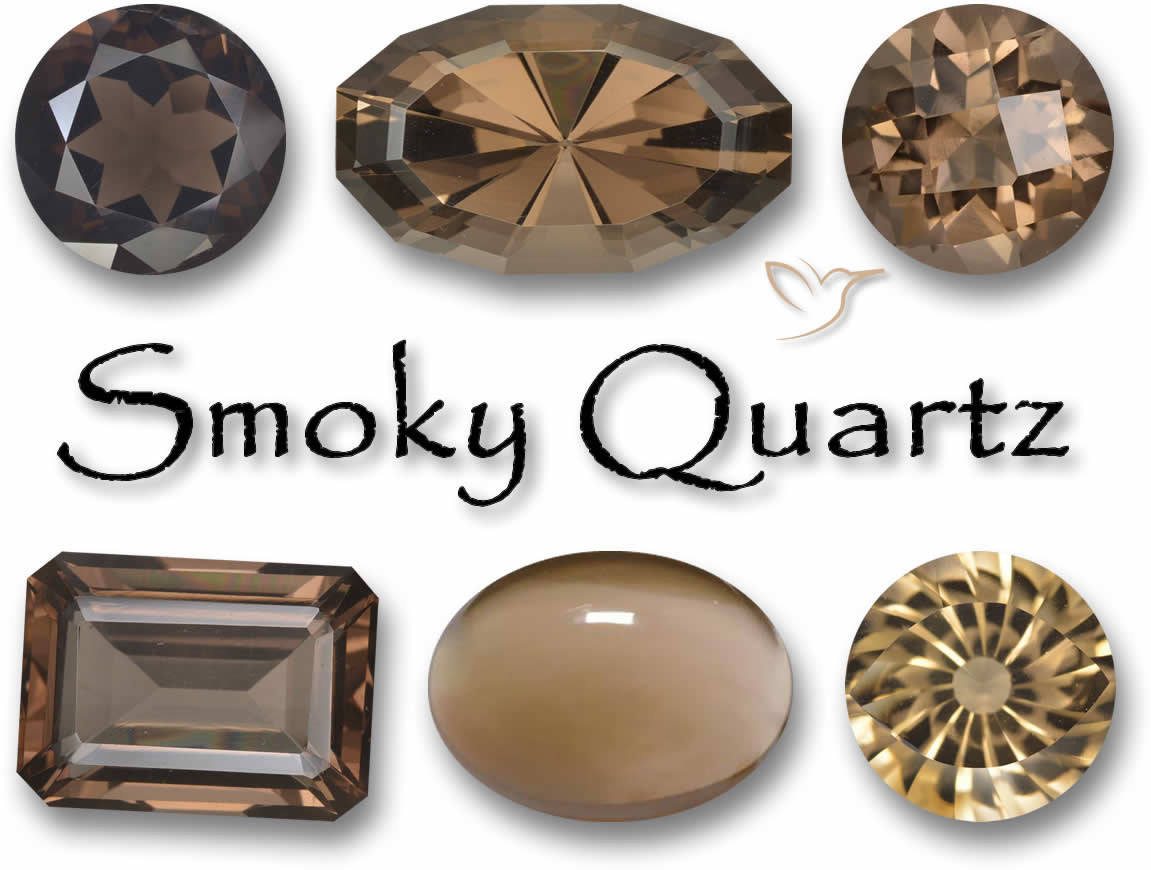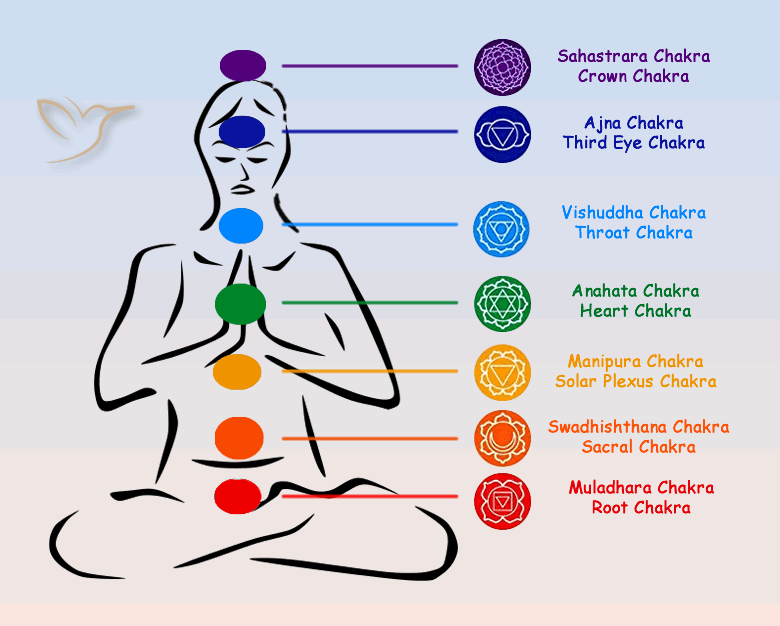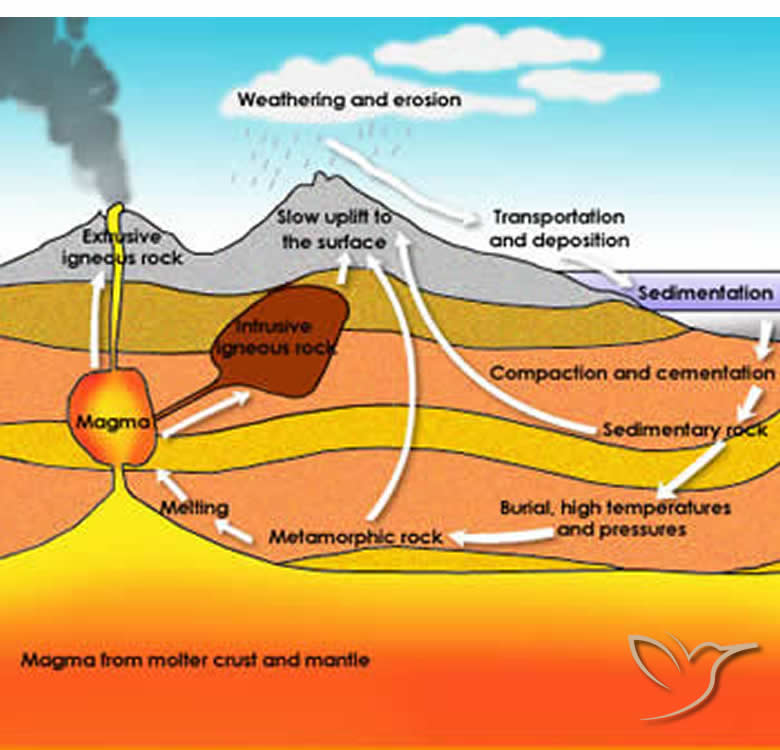Smoky Quartz Gemstone Information

Smoky Quartz Introduction
Smoky Quartz stands out with its deep earthy shades and grounding qualities, making it a gemstone appreciated for both its appearance and its reputed metaphysical attributes. From early societies to today's crystal fans, people have valued Smoky Quartz for its potential to shift negative energy toward positive ones and foster feelings of steadiness and safeguard.
The quartz group features well-known members like Amethyst, Citrine, Agate, Jasper, and Rose Quartz. As you can tell from these, quartz shows up in an impressive variety of hues and designs.
Quartz ranks as one of the most abundant minerals on the planet - think desert sands, mountain granite, igneous rocks, and volcanic lava. It's practically everywhere!
Our focus here is on the quartz suitable for gemstones, which falls into two categories:
- Macro-crystalline: These are big, easily recognizable crystals, often clear with defined edges and pointed tips.
- Micro-crystalline: These consist of small, tightly packed crystals that tend to be opaque and rounded.
Smoky Quartz belongs to the macro-crystalline type, typically fully transparent with rich, grounded colors.
Smoky Quartz Colors

True to its name, Smoky Quartz appears as a darker stone, spanning from a pale grayish brown to nearly black.
Impurities during its creation cause this coloring, and based on the minerals involved, it might show yellow, amber, or red hints - sometimes likened to coffee, honey, or caramel, depending on who's describing it.
When it comes to value in this affordable gem, it really boils down to personal taste, as all brown variations hold comparable worth.
Smoky Quartz Species
Most brown quartz simply goes by Smoky Quartz, but two notable varieties have earned recognition, even though they're identical in chemistry and structure to standard Smoky Quartz.
- Cairngorm Quartz: This yellow-brown type hails from Scotland's Cairngorm Mountains and occasionally gets called Scotch Topaz, tying into local fame.
- Morion Quartz: A very dark, near-black version said to result from natural radiation - safe to handle, though not always authentic.
Smoky Quartz Clarity and Cut

Smoky Quartz gems usually boast top-notch clarity. While some might have inclusions or haziness that appeal to certain tastes, you can easily find pieces with perfect transparency.
This sturdy gem comes in various shapes and cuts - beginners in gem cutting often start with it due to its low cost and ease of working.
As a clear stone, faceting enhances its sparkle best, but cabochons offer a smooth, domed style for a retro feel, and carvings into shapes like flowers or animals add creativity.
Spiritual Meaning of Smoky Quartz
Disclaimer: The details shared here on the spiritual and healing aspects of Smoky Quartz are for educational purposes only. They should not replace advice from qualified healthcare professionals. Always consult a doctor for medical concerns.
Smoky Quartz shares the broad benefits of quartz crystals, such as boosting the immune system, sharpening mental focus, improving concentration, amplifying psychic skills, and restoring physical balance.
Beyond that, it may help dispel negativity and low moods, ease fears and worries, and even support during tough emotional periods. Isn't it interesting how a stone like this could inspire resilience and goal achievement in challenging times?
Smoky Quartz and the Chakras
Disclaimer: The details shared here on the spiritual and healing aspects of Smoky Quartz are for educational purposes only. They should not replace advice from qualified healthcare professionals. Always consult a doctor for medical concerns.
Chakras refer to energy points in the body, also called Qi or Prana. Seven main ones align along the body, each linked to physical, emotional, or mental well-being and a specific color.

Smoky Quartz connects primarily to the Root Chakra, which handles essentials like home, security, safety, and basic needs like food and water.
If insecurity or concerns about your surroundings arise, Smoky Quartz might help foster a sense of connection and stability.
Blockages in the Root Chakra could show as eating issues, excessive materialism, or impatience. On the physical side, it might involve bladder problems, digestive troubles, cramps, lower back pain, or prostate issues.
Check our in-depth piece on Chakra Gemstones for more insights.
Health Benefits of Smoky Quartz
Disclaimer: The details shared here on the spiritual and healing aspects of Smoky Quartz are for educational purposes only. They should not replace advice from qualified healthcare professionals. Always consult a doctor for medical concerns.
In terms of physical support, Smoky Quartz is thought to benefit the back, hips, abdomen, and legs, plus organs like the adrenals, pancreas, and kidneys.
It could aid in energizing the body, detoxification, and countering negative energies. Plus, it serves as a shield against everyday radiation sources, including EMFs, medical treatments, and chemo.
Smoky Quartz Price

Smoky Quartz Price List |
||
| Cut / Style | Size range | Price range / USD |
|---|---|---|
|
Faceted |
Free Size |
$0.5 - $10/ct |
|
Cabochon |
Free Size |
$0.5 - $8/ct |
Like many quartz types, Smoky Quartz stays budget-friendly, with even sizable, finely cut, clear stones going for just a dollar or two per carat.
Except for Cairngorm and Morion, most shades and clarities price similarly - it's all about what you like. Stones leaning yellow or purple, whether natural or heated, might go as Smoky Citrine or Smoky Amethyst and fetch more.
Smoky Quartz Discovery

The term Quartz traces back to German "Quarz" and Polish "Kwardy," both meaning hard. Humans have used quartz for tools, decor, jewelry, and spiritual practices for millennia.
"Smoky Quartz" entered gem terminology in 1837 via mineralogist James Dwight Dana, named for its smoke-like hue.
Explore our full article on Gemstone Names for details.
Family standouts like amethyst, citrine, and rose quartz appear in records from Ancient Egypt and Greece.
Romans carved them into seals for documents, Sumerians made cylinder seals earlier, and in China, thin Smoky Quartz slices served as early sunglasses.
Smoky Quartz linked closely to Celts and Druids, featured in Samhain festivals marking harvest's end. Today, it graces Scotland's Crown Jewels and a massive one resides at Balmoral Castle, bought by Queen Victoria.
Where is Smoky Quartz Found?

Smoky Quartz appears worldwide, but top specimens come from Brazil, Madagascar, Russia, and Scotland - where it's the national gem.
How is Smoky Quartz Formed?

Quartz often forms in pegmatite, an igneous rock from slow-cooling magma. As it cools, fissures fill with fluids and gases that crystallize into gems over time.
Added elements during this process influence color - aluminum yields smoky tones, iron creates amethyst's purple or citrine's yellow.
Darker Smoky Quartz sometimes ties to nearby radioactive minerals, but it's safe to touch.
Can Smoky Quartz Be Treated?
Usually, Smoky Quartz only gets cut and polished from its raw state, without further enhancements.
Some undergo irradiation to mimic natural dark shades from radiation, but that's rare given the cost for such a low-priced gem. Others might be heated to lighten color - decisions, decisions!
At GemSelect, we disclose any treatments on our gems.
What Jewelry is Smoky Quartz Suitable For?
With a 7 on Mohs scale, all quartz, including Smoky, suits any jewelry type durably.
Dive into our Mohs hardness scale article for more.
Available in big sizes at low prices, it's perfect for newbie jewelers experimenting.
It featured in Victorian mourning pieces, and its subtle earth tones fit modern ethnic or tribal styles today. Those masculine shades make it great for men's items too.
How to Care for Smoky Quartz
Warm soapy water and a soft wipe keep Quartz looking sharp.
At 7+ on Mohs, it might scratch softer gems in storage, while harder ones like ruby or sapphire could harm it. Store separately in boxes or cloth pouches.
How to Tell a Real Smoky Quartz

Lab-made quartz exists for industry, indistinguishable from natural, but fake Smoky Quartz is unlikely - too much effort for little payoff.
Here's a quick tip: Get familiar with its look through photos or stores. Study colors, shapes, and cuts.
At 7 on Mohs, it scratches glass but not vice versa. An iron nail or key shouldn't mark it.
Our Mohs article has more details.
Since it's inexpensive, buy from trusted sellers for assurance. Watch for mislabeling as pricier stones like Brown Topaz, Black Tourmaline, or Brown Diamond - those differ in hardness or shine.
This isn't exhaustive, but it's a start.
At GemSelect, we provide brief ID reports from labs like AIG, ICA GemLab, and BGL Lab.
What is So Special About Smoky Quartz?
The warm, woody browns of Smoky Quartz evoke images of honey, whiskey, and dark chocolate. Lucky finds might blend all these with a golden hint.
Despite its appeal and spiritual reputation, it remains affordable in various sizes, easy to match for sets from bracelets to rings.
For aspiring creators, its low cost, size options, toughness, and shape variety make it ideal for custom jewelry.
Smoky Quartz - Gemological Properties
|
Chemical Formula: |
SiO2 - Silicon dioxide |
|
Crystal Structure: |
Hexagonal |
|
Color: |
Light yellowish brown to deep blackish brown |
|
Hardness: |
7 on the Mohs scale |
|
Refractive Index: |
1.530 to 1.540 |
|
Density: |
2.58 to 2.64 |
|
Cleavage: |
None |
|
Transparency: |
Transparent to translucent |
|
Double Refraction or Birefringence: |
Up to 0.009 |
|
Luster: |
Vitreous |
|
Fluorescence: |
Usually None |
Frequently Asked Questions
What is Smoky Quartz?
Smoky Quartz is a variety of macro-crystalline quartz known for its transparent, earthy brown tones, ranging from light grayish brown to nearly black.
What colors can Smoky Quartz appear in?
It typically shows shades from light brown to deep blackish brown, sometimes with yellow, amber, or red undertones due to mineral impurities.
What is the spiritual significance of Smoky Quartz?
It's believed to help transmute negative energy, promote grounding, and aid in overcoming fears, though this is based on traditional views and not scientific evidence.
How does Smoky Quartz relate to chakras?
It's mainly linked to the Root Chakra, supporting feelings of security and stability.
Are there health benefits associated with Smoky Quartz?
Some traditions suggest it supports physical areas like the back and organs of elimination, but always seek professional medical advice for health issues.
How much does Smoky Quartz cost?
It's very affordable, often $0.5 to $10 per carat for faceted pieces, depending on size and cut.
Where is Smoky Quartz sourced from?
Major sources include Brazil, Madagascar, Russia, and Scotland.
Can Smoky Quartz be treated?
Rarely, it might be irradiated for darker color or heated to lighten it, but most is untreated beyond cutting.
How do I care for Smoky Quartz jewelry?
Clean with warm soapy water and store separately to avoid scratches from harder or softer gems.
How can I verify if Smoky Quartz is genuine?
Check its hardness by seeing if it scratches glass but not metal; buy from reputable sellers for assurance.

